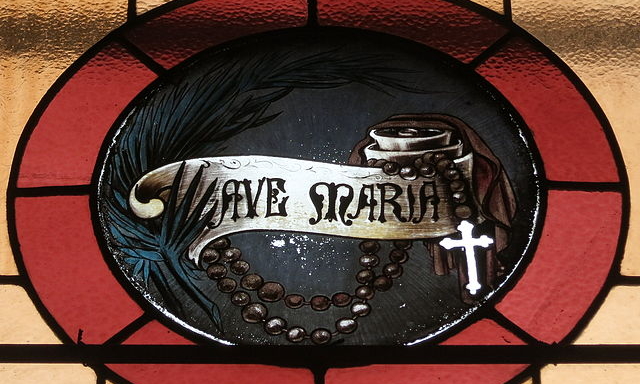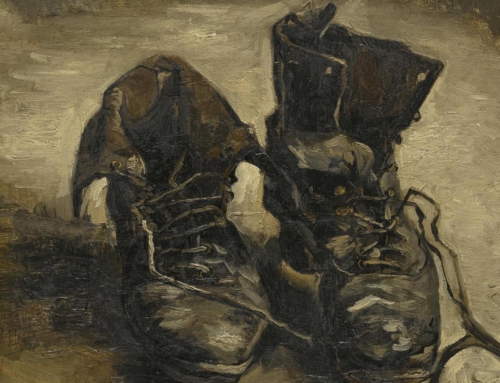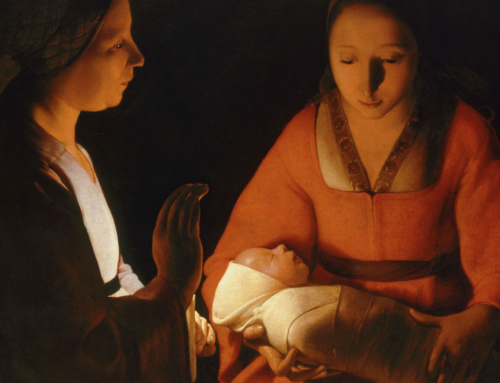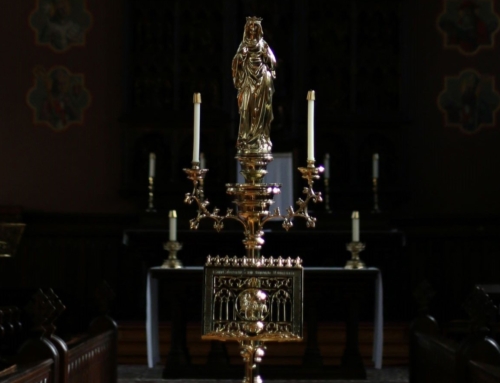In The Lord of the Rings, the Lady Galadriel gives Frodo a gift upon his departure from Lothlórien: a phial, somehow filled with the light of Eärendil, the star that serves as a sort of Polaris or Morning Star to guide the Eldar (elves) to the Undying Lands. When Galadriel gives Frodo the phial, she expresses her purpose for the gift: “May it be a light to you in dark places, when all other lights go out.” Frodo first uses the phial as a light in Shelob’s lair, a cave which bore a “sense of malice so intense that Frodo reeled” (LotR,IV.9). As he raises the phial aloft, he exclaims “Aiya Eärendil Elenion Ancalima!” which translates to “Hail Eärendil, brightest of stars!” At his words, the light shines forth brighter. Later, when Sam uses the phial, he cries out:
O Elbereth Gilthoniel
o menel palan-diriel,
le nallon sí di’nguruthos!
A tiro nin, Fanuilos!Oh Elbereth Starkindler,
from the high firmament gazing afar,
to thee do I cry amid this horror!
Look kindly upon me, Ever-pure Lady!
For those who aren’t Tolkien geeks, Elbereth (or Varda) is the Queen of the Stars in Tolkien’s mythology. At Sam’s words, the light “flamed like a star that leaping from the firmament sears the dark air with intolerable light.”
Given by Lady Galadriel and a source of light through prayer, the phial is for us an image of the Rosary. The Blessed Virgin Mary, fairest of all women, gave us the Rosary as a light in dark places. In praying the Rosary, we cry out to Mary the Morning Star that she may guide us to Heaven in her Son. In whispering our Aves, we ask the Queen of Heaven, the Woman robed in stars, for Her aid in the darkest times of life. Even Sam’s prayer to Elbereth is suspiciously similar to the Hail Holy Queen, which we pray to end the Rosary: “Hail Holy Queen…to thee do we cry…in this valley of tears! Turn then, most gracious advocate, thine eyes of mercy towards us.”
We can identify three effects of the phial which also apply to the Rosary. First, the phial provides light to illuminate the hobbits’ path, lest they stumble: By praying the Rosary, we grow in grace and can thus understand better the way we should turn. We have faith that, by praying to God through the powerful intercession of the Mother of God, He will draw us closer to Himself, in Whom is all our joy. Second, the phial gives the hobbits hope. Despite the trials they are facing, the light of Eärendil reminds them of the great stories about how others have triumphed over evil and how, above all the gloom of Mordor, there is yet beauty and goodness and truth. The Rosary of Mary is a source of hope for us, for by meditating on the life of Christ and walking with Him, we come to understand all the more that death is not the end of life, that Christ has conquered death, and that He has promised His kingdom to those who follow Him. The Rosary is Mary’s humble way of leading us through this world while keeping us from despairing of the fullness of life to come. Third, the phial is a terror to evil ones. Shelob, an ancient evil in spider form, took to flight at the flame of the shining phial. Similarly, the Holy Rosary is a terror to demons, a sure weapon in our fight against our own vice and against the world’s evils. For proof, just take a close look at the lives of the saints.
But the Rosary itself is far more powerful than the phial. It’s a prayer that can be a petition, a meditation, a prayer of thanksgiving, a prayer of praise, even a prayer of reparation for sins. There is one thing, however, that the Rosary is not: an instant solution to all our problems. In the closing prayer to the Rosary, we pray that we might imitate what the mysteries contain and obtain what they promise. It is easy to forget about the former intention while praying fervently for the latter, but they are a package deal. We must imitate what the mysteries contain, all the mysteries, from the Annunciation through the Crucifixion to the Resurrection and beyond. The Rosary does not take away the pain of this life; rather it helps us to see our suffering in the Cross of Christ. So let us rejoice, knowing with a living hope that the Blessed Virgin Mary will lead us, through whatever may come our way, to her Son and our Lord, Jesus Christ.
✠
Image: Stained glass, Ave Maria & Rosary (CC BY-SA 4.0 by Wikimedia user)







